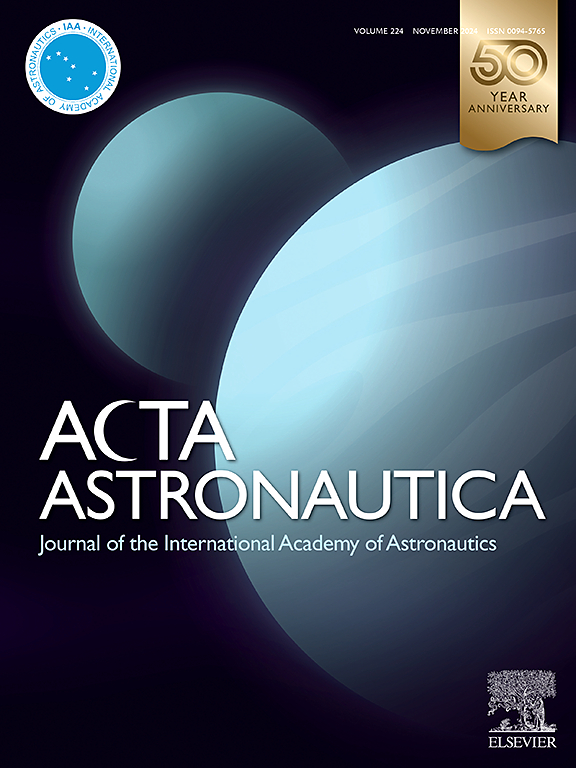天平点引力波观测站的稳定配置设计
IF 3.1
2区 物理与天体物理
Q1 ENGINEERING, AEROSPACE
引用次数: 0
摘要
太阳-地球 L2 天平点配置是天基引力波探测的选项之一。由于日地三体系统具有很强的非线性动力学特性,长期的配置稳定性对高精度测量至关重要。本文提出了一种高效的设计方法,并确定了天平点引力波观测站的可行参数域。首先,建立了天枰点构型的动力学模型,并定义了稳定性指标。讨论了影响相对几何构型的敏感参数,发现相位角是关键因素。然后,提出了一种高效的设计方法,并将设计过程分为两个步骤。先后优化了地球相位偏移轨道的相位角和天平点配置。最后,将提出的方法应用于 LAGRANGE 任务概念。结果表明,三个稳定性指数分别降低了 59%、42% 和 23%。此外,还建立了配置参数与稳定性指数之间的映射关系。讨论了稳定的天平点配置的可行参数域。为保证构型的稳定性,秤锤点轨道 x 和 z 方向的可行振幅域应分别小于 6200 千米和 42000 千米。该研究可为未来利用 "秤锤点 "构型稳定设计和实施引力波探测任务提供参考。本文章由计算机程序翻译,如有差异,请以英文原文为准。
Stable configuration design for libration point gravitational wave observatory
The Sun-Earth libration point configuration is one of the options for space-based gravitational wave detection. Long-term configuration stability is crucial for high-precision measurements, challenged by the strong nonlinear dynamics of the Sun-Earth three-body system. This paper proposes an efficient design method and determines the feasible parameter domain for the libration point gravitational wave observatory. First, the dynamic model for the libration point configuration is established, and the stability indexes are defined. The sensitive parameters that affect the relative geometric configuration are discussed and the phase angle is found to be the key factor. Then, an efficient design method is proposed, and the procedure is divided into two steps. The phase angle of the Earth phase offset orbit and the libration point configuration are optimized successively. Finally, the proposed method is applied to the LAGRANGE mission concept. The results show that the three stability indexes decrease by 59%, 42% and 23%, respectively. Moreover, a mapping between configuration parameters and stability indexes is established. The feasible parameter domain for the stable libration point configuration is discussed. The feasible amplitudes domain in the and directions of the libration point orbit should be less than 6200 km and 42000 km, respectively, to guarantee configuration stability. This research could provide a reference for the stable design and implementation of gravitational wave detection missions utilizing libration point configuration in the future.
求助全文
通过发布文献求助,成功后即可免费获取论文全文。
去求助
来源期刊

Acta Astronautica
工程技术-工程:宇航
CiteScore
7.20
自引率
22.90%
发文量
599
审稿时长
53 days
期刊介绍:
Acta Astronautica is sponsored by the International Academy of Astronautics. Content is based on original contributions in all fields of basic, engineering, life and social space sciences and of space technology related to:
The peaceful scientific exploration of space,
Its exploitation for human welfare and progress,
Conception, design, development and operation of space-borne and Earth-based systems,
In addition to regular issues, the journal publishes selected proceedings of the annual International Astronautical Congress (IAC), transactions of the IAA and special issues on topics of current interest, such as microgravity, space station technology, geostationary orbits, and space economics. Other subject areas include satellite technology, space transportation and communications, space energy, power and propulsion, astrodynamics, extraterrestrial intelligence and Earth observations.
 求助内容:
求助内容: 应助结果提醒方式:
应助结果提醒方式:


